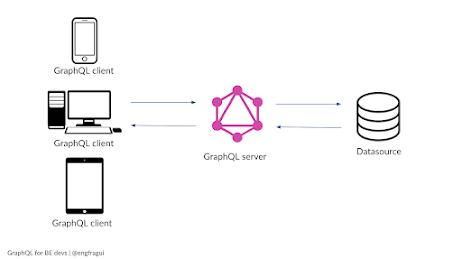Hello guys, if you are preparing for web developer interviews where GraphQL skills are needed and you are looking for frequently asked GraphQL Interview questions then you have come to the right place. Earlier, I have shared both Web development interview questions as well as REST Interview Questions and in this article, I am going to share 20 common GraphQL Questions from Interviews with answers. These questions covers essential GraphQL concepts like difference between REST And GraphQL and pros and cons of using GraphQL to consume APIs. If you have used GraphQL in past then you can easily answer these questions but if you forgot then you can always join of these best GraphQL online courses to learn and revise key GraphQL concepts.
But, before we get to the GraphQL interview questions, let me tell you what it really is. GraphQL is basically a query language that is famous for giving clients exactly the data they ask for and nothing more.
It is also perfect as a server-side runtime for application programming interfaces. GraphQL can be used for making APIs faster, efficient, flexible, as well as developer-friendly. It can also be deployed within an integrated development environment. You can use it as an alternative to REST as you can construct requests that pull data from multiple data sources in a single API call.
21 GraphQL Interview Questions with Answers for 1 to 3 Years Experienced
GraphQL also allows API maintainers the flexibility to add and depreciate fields without impacting your existing queries. This means that you can develop APIs with whatever methods you want because the GraphQL specification will make sure that they perform in predictable ways to clients.Now let us get to the important bit. If you are looking to apply for a job that requires you to be skilled in GraphQL, you have come to the perfect place. The interview questions in this article will definitely help you land your dream software job.So what are you waiting for? Start learning now.
1. What exactly is GraphQL?
2. What do you know about the history of the GraphQL language?
4. What can you tell us about authentication in GraphQL?
Authentication is basically a mechanism where you give permissions to authenticated users in your application. Using GraphQL, you can delegate the authorization using a business logic that describes whether a user has authorization for performing an action or not.5. What are some of the features of authentication in GraphQL?
6. How can you handle server-side caching in the GraphQL language?
7. What kind of response do you get in the GraphQL language?
8. What do you mean by over-fetching in the GraphQL language?
9. What do you mean by under-fetching in the GraphQL language?
10. How can you overcome the issues of over-fetching and under-fetching in the GraphQL language?
11. What are some of the advantages of using GraphQL?
12. What is the basic difference between GraphQL and REST?
13. What databases can you use with GraphQL?
14. What are some of the features of authorization in GraphQL?
15. Is it possible to use GraphQL in offline mode?
16. What can you tell us about GrapiQL?
17. What are some of the major operations of GraphQL?
18. How can you host a GraphQL server online?
19. What advantages does GraphQL have over REST API?
20. How can you validate JSON results in the GraphQL language?
21. What can you tell us about authentication in GraphQL?
- 21 Git Interview Questions with Answers
- 20 Software Design and Pattern Questions from Interviews
- 130+ Java Interview Questions with Answers
- 17 Spring AOP Interview Questions with Answers
- 40+ Object-Oriented Programming Questions with Answers
- 25+ Spring Security Interview Questions with Answers
- 50+ Microsoft SQL Server Phone Interview questions
- 17 Java Debugging Interview Questions with Answers
- 10 Java Locking and Multithreading questions
- 12 SQL Query Interview questions with solutions
- 25 Recursion Interview questions with answers
- 30 JavaScript Interview Questions with Answers
- 20 Algorithms Interview Questions for Software Developers
- 20 PostgreSQL Interview Questions with Answers
- 10 Oracle Interview Questions with Answers
- 20+ Spring Boot Interview Questions with Answers
- 50 SQL and Database Interview Questions for Beginners
- 15 Cyber Security Interview Questions with Answers
- 20 JUnit Interview Questions with Answers
- 35 Python Interview Questions for 1 to 2 years experienced


















No comments :
Post a Comment